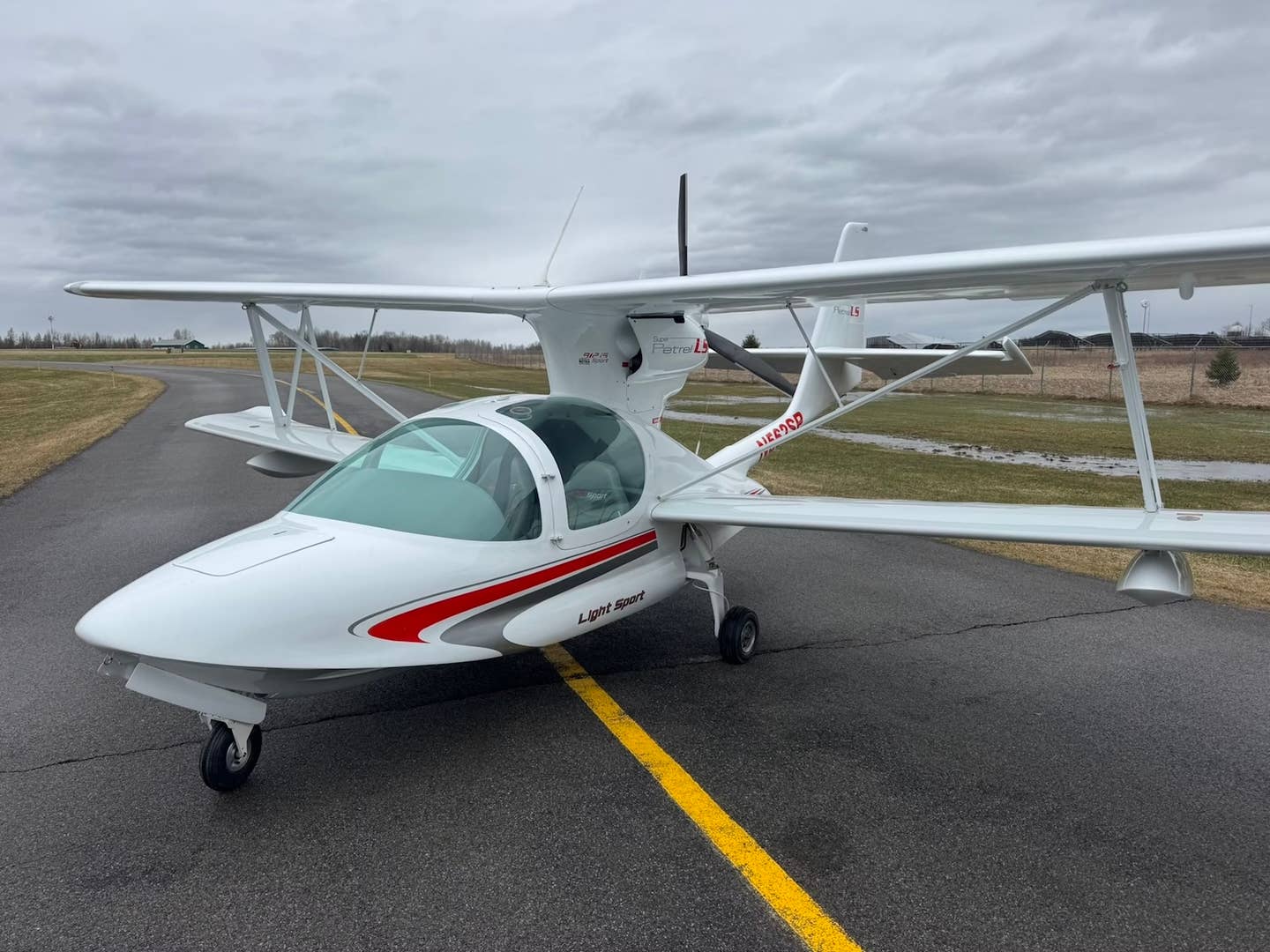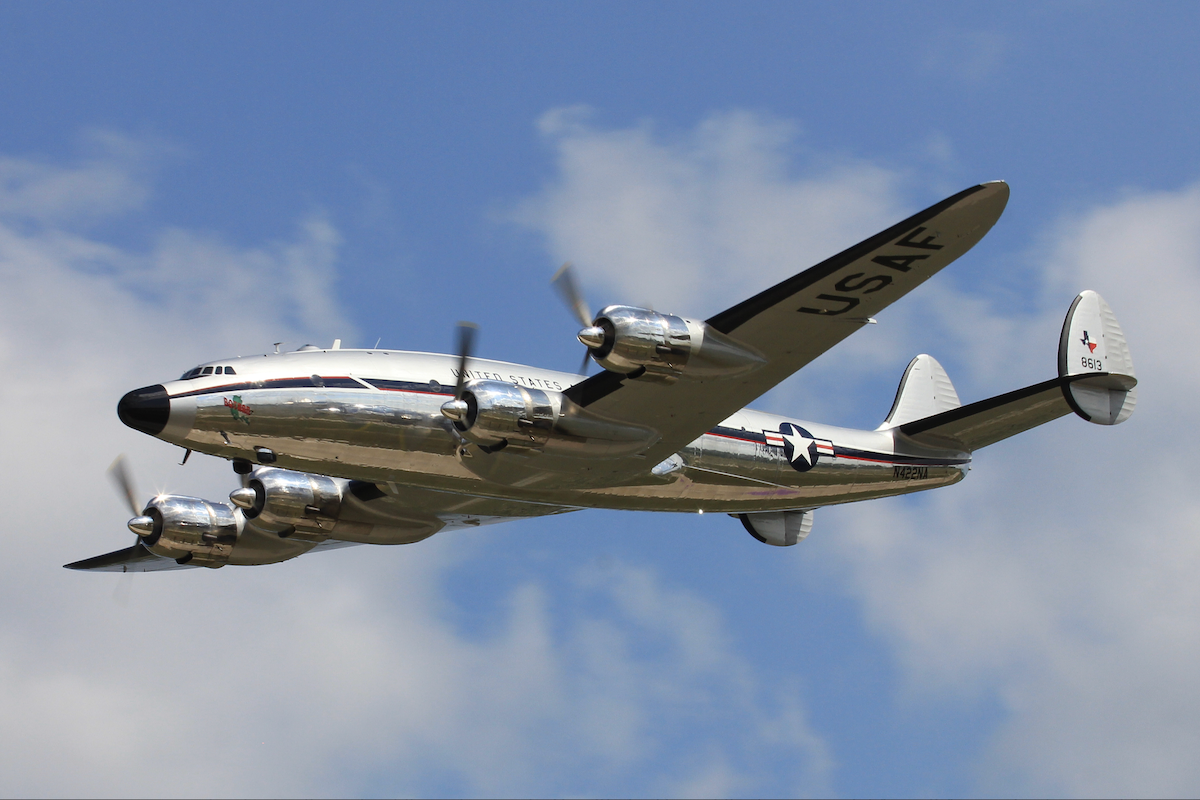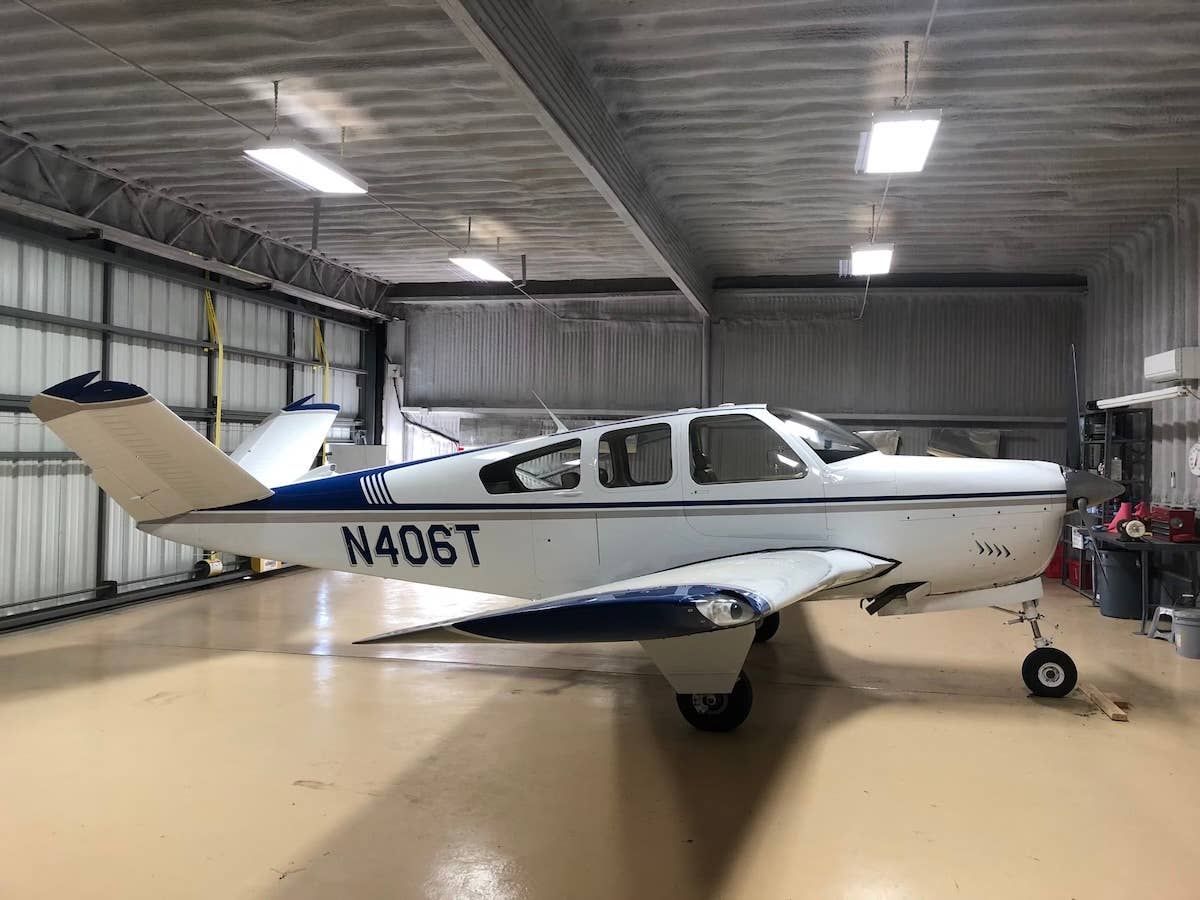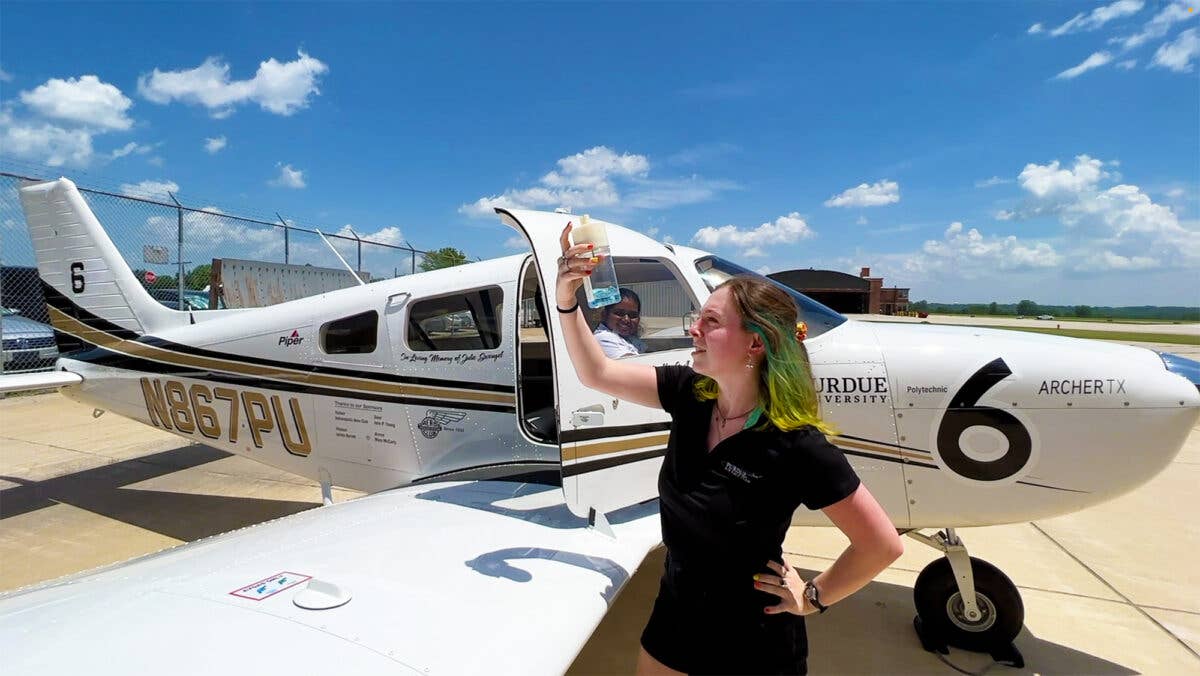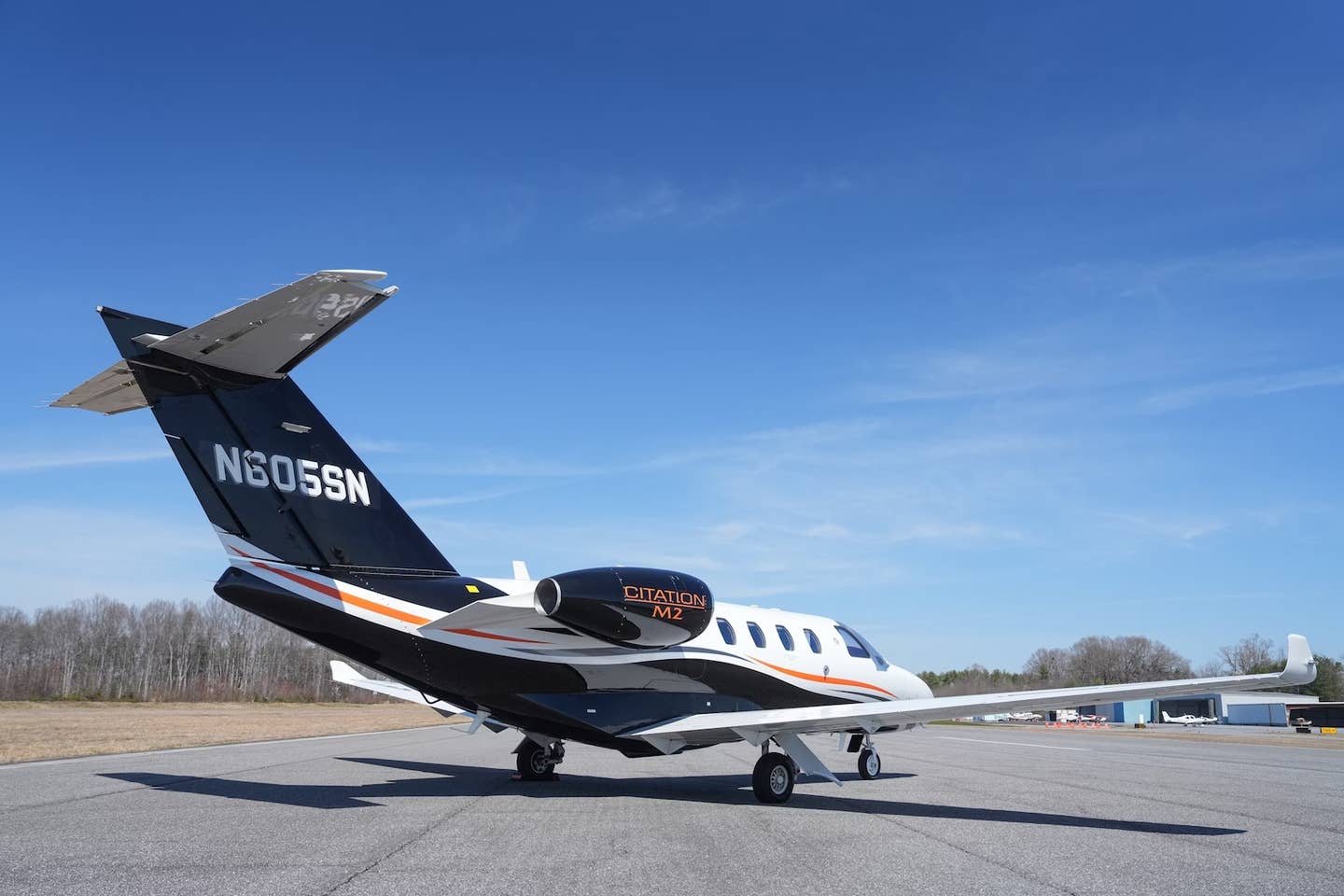
Illustrated by Barry Ross
The simple logbook entry read "installed rectifier in alternator test circuit, flight tested OK." We'd had a problem with our alternator-out light that was corrected on a Monday prior to a flight planned for Saturday. The briefer was right; we arrived at our hangar at Lee Gilmer Memorial (GVL) in Gainesville, Georgia, with less than a quarter-mile visibility and vertical visibility of 100 feet. We listened to the ASOS [Automated Surface Observation System] on our portable navcom, the CD player in the truck, and replaced out-of-date charts lapsed since we last visited Hangar DD13. After a while, the ASOS reported 1¾ miles and vertical visibility of 300 feet. OK for an instrument departure but not for the 400-feet-agl requirement for the LOC 05. We were hoping to make my stepson's sixth-grade football game in Memphis, Tennessee. We were patient; we had plenty of time. Because conditions were now improving, we preflighted SkyFlys, our F33A Bonanza, and taxied to Runway 05 for a run-up and departure clearance. The "we" I refer to are my wife and I. She's a commercial, multiengine, instrument-rated pilot; I'm a private multiengine pilot, instrument-rated with a lot of Baron hours. It was my turn for the left seat; she had the radios. The checklist run-up was perfect, and we briefed the instrument departure, got our clearance and release, and launched.
Departing into conditions like these is what instrument pilots train for. Executing them, breaking out on top of a thin layer at 3,000 feet into the CAVU above with the billowy blanket below is to die for — literally, maybe. We're sharing this experience because we did everything right and were ready for emergencies, or so we thought, before launching. Every item on the checklist checked. All the gauges read as they should, no rush, lots of time, a gorgeous view on top. Ever been there?
We departed uneventfully, on course. Atlanta Approach handed us off several times quickly, then we were on to Atlanta Center. Scan was good; everything was humming along fine. We double-checked each other and had our normal dialog of "best practices" for SkyFlys. Atlanta Center called "Bonanza 51Q, contact Chattanooga Approach 125.1." We "wilco'ed" and made contact. A few minutes later, about 25 minutes into the flight, Chattanooga called, "Bonanza 51Q, recycle your transponder and ident; we've lost radar contact."
We performed as requested but were unable to get a reply light on the transponder, although the test switch illuminates the reply light. The pilot in the right seat with the most ratings said, "Check your alternator switch. Remember last year when you forgot to turn on the alternator switch? The transponder was the first to go."
Switch was checked, recycled, no change. So we started to troubleshoot to no avail. We were only 30 minutes into the flight now, with a brand-new battery, I might add. We both noticed at the same time that the alternator gauge showed a slight discharge, less than one-half an increment left of neutral but only slightly more than normal. The alternator-out warning light, untested at departure, was not illuminated and would not come on in the test mode.
So then what could we do? The options were to continue several hundred miles to VFR with an unknown electrical problem that could worsen to perhaps smoke or fire, land at Chattanooga (GQO), or return to GVL with the same caveats. We were confident in our equipment and our abilities, so we chose the 65-mile-return-to-GVL option since there had been no odors or smoke in the cabin. We shut down what we could and all was well until about 20 miles from GVL, where there was a sudden, loud squeal on the comm and the 430 went black. The No. 2 navcom died shortly after being turned back on. We were then less than one hour into a new battery. Radar contact was lost and nothing worked but the portable navcom and the 396.
Before handoff back to Atlanta Approach, Chattanooga Approach had inquired if we needed assistance and let us know that there were several airports close by. With the data we had at that time, we advised Chattanooga Approach to pass on our situation regarding the unknown electrical issue, that we had portable navcom and that there might come a time when we couldn't transmit but we'd be able to hear. When handed back off to Atlanta Center, while we still had communications, we explained our situation but did not pass along that we could receive only, thinking that Atlanta Center had been fully informed of our available equipment inventory. We had also requested the LOC 05 at GVL with vectors to final. When everything went dead, we had expected to continue to receive vectors to final for the approach on the last approach frequency, but for whatever reason, that did not occur.
Quite frankly, it was as it should be — we remained completely responsible for the safe completion of the flight. As we had requested vectors to final, we closed within 5 nm of GVL and turned outbound on the reciprocal heading to a point just under 10 miles from the MAP and descended to the 3,100 msl approach altitude once established on the LOC. We started the approach. As expected, when we pulled the gear handle to extend the gear, we got a transient red light, then nothing. OK, we had to extend the gear manually, and we slowed the approach speed to 100 knots to accomplish the manual gear extension before reaching the final approach fix. The 105-pound right-seat pilot crawled into the rear seats to manually extend the gear while I concentrated on aviating and navigating. When she got back up front, we were at the FAP [final approach point], and we started a decent. Our cell phones now worked, so she called Atlanta Approach, which was very happy to hear from us and coordinated a fly-by with the guys at Champion Aviation, the FBO at GVL. Fortunately, everything appeared to be down and locked. We circled to a perfect, if I might pat myself on the back, no-flap landing, taxied to the fuel pump, filled up and then walked to the hangar for the ATV and tow bar. All ended safely and well. We called Atlanta Approach with many thanks and to "cancel IFR" and queried them as to whether they wanted us to file any paperwork, since we couldn't imagine how many FARs we had probably broken. They indicated that they were just glad we were down safely.
So how many lessons did we "really learn" here? We learned that despite a few thousand flying hours between us, we have more questions than answers. What we did learn was this:
Redundant equipment, even portable, can save you from panic and expand your options, and can be used in "best choice" situations. Based on the type of flying you do, buy redundancy, learn to use it, practice scenarios with it, and keep it in good working order and in close proximity to you in the airplane.
We definitely are going to add a check of the alternator-out warning lights to the preflight. Were we wise to launch into such conditions with an untested weapon, so to speak? I don't know; would you have? If we had tested the alt-out warning light and found it to have failed, knowing that it had just been worked on, would we have launched? I am uncertain — what would you have done, minimum equipment-list requirements aside?
Sometimes there is no "right" choice, but only your best choice based on experience and available resources. We chose to use all available resources and to go where we were expected based on our last communication with ATC. Certainly without the portable navcom with CDI and the GPS, an approach would not have been possible, and we would have had to find VFR somewhere. Should we have done that anyway?
We need to review the AIM more often. Hindsight is great, and I'm sure the Aeronautical Information Manual contains definitive procedures that we have long since forgotten from written days that we should have, but didn't, follow.
In urgent situations, sometimes more pilots are better. Even though we had an uneventful end, regardless of broken regulations, what would either of us have done had we been lone, single-pilot IFR? We like to think that the end results would have been the same, but we're both grateful for our partnership and that we were both along for the ride.
To see more of Barry Ross' aviation art, go to barryrossart.com.

Sign-up for newsletters & special offers!
Get the latest FLYING stories & special offers delivered directly to your inbox

